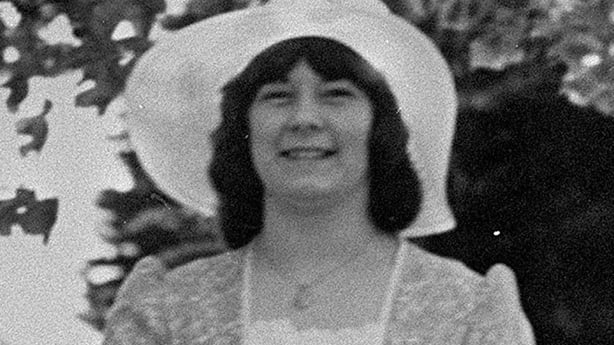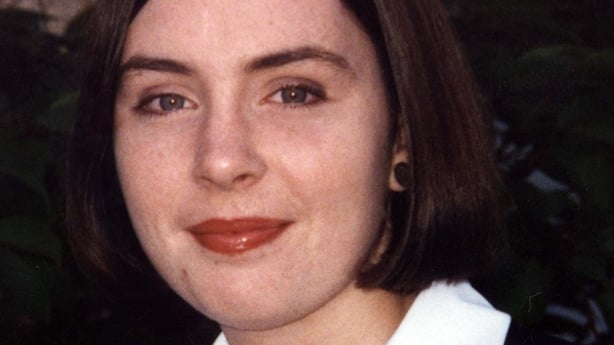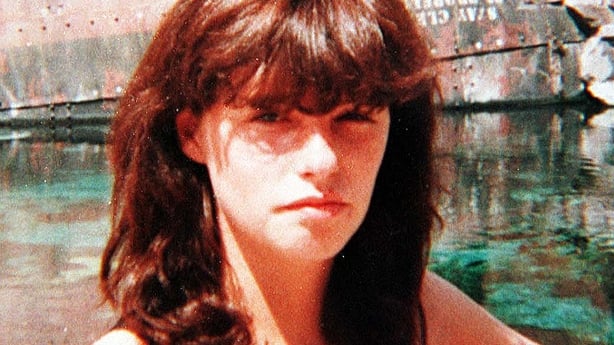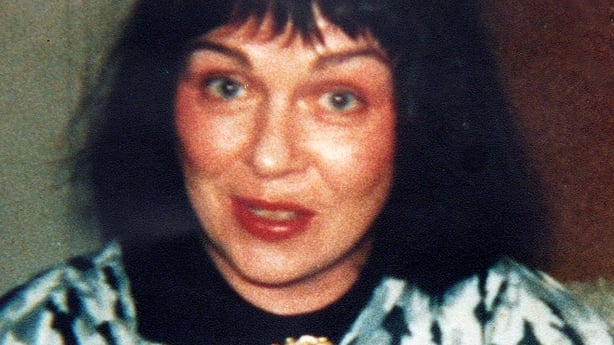Reporter Mick Peelo and director John Downes are the duo behind Beyond the Vanishing Triangle, a new two-part true crime series on RTÉ One that explores some of the most notorious cases of women disappearing within a so-called ‘vanishing triangle’. in the 1990s. It examines how these cases were investigated and includes interviews with their family members – watch Beyond the Vanishing Triangle via RTÉ Player here.
Below they explore the process behind investigating missing persons cases in Ireland.
After our previous series Crimes and Confessions aired, we were approached with another interesting suggestion: could we apply some of the same journalistic techniques and documentary storytelling tools to the cases of women who disappeared without a trace in Ireland in the 1990s, in one Territory that became a phenomenon? known as the vanishing triangle?
This was the original idea for the series. Now we had to research and figure out what stories to tell and why and how to tell them. We limited our research to the 1990s, when the term “disappearing triangle” was first discussed. We began investigating cases of disappearances of women whose bodies were never recovered: Annie McCarrick (1993), Eva Brennan (1993), Imelda Keenan (1994), Jo Jo Dullard (1995), Fiona Pender (1996), Ciara Breen (1997), Fiona Sinnott (1998) and Deirdre Jacob (1998). Why are none of these cases resolved today, almost 30 years later? Why is there no closure for the families of these women?
Fiona Pender, who disappeared in 1996 (Photo: Collins Photos)
The family members were very excited about the conversation and grateful for anyone who could bring their case to the public. However, we quickly realized that missing persons cases have their own unique impact on families. Murder cases, while tragic, at least bring closure to families who can bury and mourn their dead. In missing cases, the grief never ends. Although the circumstances of these disappearances varied, the same themes emerged in the families: a feeling of being kept in the dark; Looking for answers; I don’t know how the Garda investigation is progressing. They live in the belief that they know who is responsible and that one or more people will get away with murder. I live with so many unanswered questions. The families left behind became our main focus. We felt this series needed to address their concerns and the common issues they raised. These families earn more.

Phyllis Murphy, who was kidnapped and murdered in 1979
Why weren’t these cases resolved? The next step in our research was to speak to the investigators who were investigating. All of the detectives we spoke to have never forgotten the cases they worked on and regret that despite their best efforts, they were unable to bring them to a successful conclusion. Her thoughts are still with the grieving families. These investigators gave great insight into the difficulties they faced in a missing persons case. With no body and no crime scene, there is no evidence that a crime was committed at all. Their investigative powers differ significantly from the powers they have in a homicide investigation. You cannot arrest or detain anyone if there is no evidence that a crime has been committed. You cannot search a premises or a car, obtain phone records, etc. without a search warrant, and it is almost impossible to persuade a judge to issue a search warrant if you have no evidence that a crime has been committed.
When an adult is reported missing and there is no evidence of a crime, the Gardaí must wait some time before conducting an investigation. Adults have the right to be missed. The first 48 hours are critical in any homicide investigation, as it allows Gardaí to gather vital evidence to help catch the perpetrator. In a missing person’s case, it can take gardaí days, weeks, or even years to determine that the person was murdered, and this limits their ability to gather evidence to convict. Gardaí upgraded most of those cases to full murder investigations years after the women’s disappearance. You have to ask yourself: Was that much too late? Could key clues have been missed because the cases weren’t initially investigated as potential murders?

Deirdre Jacob, who disappeared in 1998 (Photo: Collins Photos)
Investigators also told us that while families can suspect someone, there is nothing that person can do if they have a solid alibi. Your job is to collect enough evidence to convince a judge and jury to convict the right person. The bar is set high and must remain so in order to protect people’s rights.
Given the high number of unsolved missing women cases in the 1990s, perhaps the way the Gardaí investigated these cases needs to change? Our research revealed that it did indeed change over the years, and the most significant changes took place after Operation Trace was formed in 1998. This was a detective unit whose job it was to determine if there were any connections or similarities in six of the cases in the 1990s. Operation Trace reviewed the initial investigations and made recommendations to the local investigative teams. Episode 2 of the series goes deeper into the work of Operation Trace.

Ciara Breen disappeared in 1997 (Image: Tom Conachy)
A historical review of Lake Garda’s missing women investigations revealed some interesting insights. Since the founding of the state, Gardaí have kept statistics on all missing person reports. These statistics reflect the social attitude towards women at the time. Although we didn’t elaborate on it in the series, it still influenced our work and the selection of cases we want to highlight in the series. In the past, missing persons cases were handled by the local Gardaí, where the case was reported. Until recently, cases were categorized as Suspicious, Possible Suicide, Suspected Drowned, or Abandoned Voluntarily. Category had a direct impact on the scope of a follow-up investigation by Garda. It was interesting to note that the first report of a woman disappearing in Ireland, whose body was never found, dates back to 1949. Between 1949 and 1977, 40 of these women were reported missing. None of them were classified as “suspicious”. Many fell into the “voluntary exit” category. Many of these women were reported missing by their husbands. The first time a missing woman case was classified as “suspicious” was in 1983. That changed between 1993 and 1998, when eight cases were classified as “suspicious,” and most of these were related to the so-called “suspicious woman”. Vanishing Triangle.
From our research, we understand that at least two of the cases we examined were classified as “possible suicides” – the cases of Eva Brennan and Imelda Keenan. Was that a fair categorization? Have Gardaí ever spoken to the families about the impact? Episode 2 deals in part with the aftermath of the Imelda Keenan case.

Eva Brennan disappeared in 1993 (Photo: Collins Photos)
We understand that the Gardaí have changed the way they categorize missing persons cases. Today they treat these cases like murders. But why do some cases still remain as missing person cases? Why does it depend on an elderly mother like Ms McCarrick to ask the Garda commissioner to escalate the case of Annie’s disappearance to a full murder investigation after 30 years? Shouldn’t all missing persons cases be immediately escalated to homicide investigations and the appropriate legislation provided for so Gardaí can carry out their investigations? If the first 48 hours are crucial and there is no good reason for the person’s disappearance, isn’t it better to suspect a crime and treat the case as a homicide than to wait and see if the person turns up years later? when it’s too late Don’t the missing person and their families deserve better?
Episode 2 of Missing: Beyond the Vanishing Triangle will air Monday 15 May at 9.35pm on RTÉ One and RTE Player.
IF YOU have information about a missing person please contact the Garda Confidential Helpline on 1800 666 111 or the National Missing Persons Helpline – 1800 442552 or visit www.missingpersons.ie


Comments are closed.